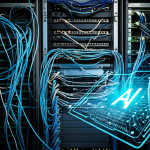As an entrepreneur with over 25 years navigating the dynamic intersections of technology, leadership, and business innovation, I’ve witnessed firsthand the profound impact of organizational culture on a company’s success. Nowhere is this more evident than in the often-misunderstood and frequently feared practice of code reviews. For many, the very phrase conjures images of critical battlegrounds, ego clashes, and demoralizing feedback sessions. But what if I told you that this critical process, when approached with intent and empathy, can transform into one of your team’s most powerful engines for learning, collaboration, and unparalleled code quality? This isn’t just an idealistic vision; it’s a strategic imperative for any future-ready organization, whether you’re building in Silicon Valley, Bengaluru, London, or Dubai.
\n
The journey from a critical battleground to a collaborative learning space begins with a fundamental shift in mindset and a steadfast commitment to psychological safety. My experience has shown me that when developers dread code reviews, it’s not just code quality that suffers; it’s team morale, innovation, and ultimately, the speed at which you can deliver value. When feedback becomes an attack, growth grinds to a halt. The challenge, therefore, is to create an environment where every line of code, every suggestion, and every thoughtful question contributes to a collective advancement rather than individual defensiveness, fostering a culture where AI and automation are embraced, and human creativity flourishes.
\n

\n
The Code Review Conundrum: Why It Feels Like a Battle
\n
Let’s be honest: the traditional code review often feels less like a peer discussion and more like an inquisition. Developers pour hours into their work, meticulously crafting solutions, only for their efforts to be dissected under a microscope. This dissection, sometimes by a colleague with a different coding style, a tighter deadline, or simply a misaligned perspective, can lead to comments that feel personal, accusatory, or overly pedantic. The focus frequently shifts to minor syntactic issues or stylistic preferences rather than the broader architectural integrity, logical flow, or business value.
\n
Early in my entrepreneurial journey, during the formative years of a tech startup in India, I distinctly remember a period where code reviews were a source of immense friction and morale drain. Our team was small, agile, and fiercely independent, but this independence often bled into a competitive, rather than truly collaborative, spirit during reviews. I recall a particular instance where a young, brilliant engineer, fresh out of university, submitted a complex module he had diligently built. The feedback he received was blunt, critical of his fundamental approach, and delivered without much constructive explanation. His face, usually beaming with enthusiasm and the thrill of creation, was utterly crestfallen. He spent the next week re-writing code, not necessarily to improve its core functionality or architectural elegance, but primarily to conform to the reviewer’s implied preferences, inadvertently losing some of his unique, innovative architectural insights in the process. This moment was a stark realization for me: the delivery of feedback matters as much as the content of the feedback itself. We were, without realizing it, inadvertently stifling creativity and discouraging junior talent from proposing novel solutions because of our unrefined approach to criticism.
\n
This adversarial dynamic creates a negative feedback loop that impacts more than just code: fear of criticism leads to less adventurous and more conservative code, which in turn leads to fewer opportunities for genuine learning and pushing boundaries. It perpetuates a cycle of mediocrity or, at best, safe adherence to existing patterns. This environment drains morale, increases anxiety, and ultimately impacts product velocity and the ability to build truly scalable systems. In a global context, where teams are distributed across diverse regions from the US to the UK, the Middle East, Europe, and Australia, cultural nuances can further exacerbate these issues, turning minor disagreements into significant misunderstandings that undermine team cohesion and trust.
\n\n
Cultivating Psychological Safety: The Foundation of Constructive Feedback
\n
The first, and arguably most crucial, step in transforming code reviews is establishing a robust sense of psychological safety. This concept, often discussed in high-performing teams, isn’t about sugarcoating feedback or avoiding difficult conversations altogether. Rather, it’s about meticulously creating an environment where team members feel genuinely safe to take calculated risks, admit their mistakes, ask seemingly \"obvious\" questions, and confidently offer innovative ideas without the paralyzing fear of judgment, humiliation, or professional reprisal. In the critical context of code reviews, fostering psychological safety manifests in several key ways:
\n
Focusing on the Code, Not the Coder
\n
Feedback must be meticulously objective and centered solely on the artifact under review—the code itself. Instead of phrases that can be perceived as personal attacks, such as, \"You made a mistake here; this is inefficient,\" strive for language that depersonalizes the critique. For example, try, \"This code segment could be optimized by adopting X pattern,\" or \"The current implementation might inadvertently lead to a performance bottleneck under heavy load, potentially impacting the user experience because of Y reason.\" This subtle but profoundly powerful linguistic shift separates the work from the individual, fostering a shared sense of responsibility for overall code quality and inviting collaborative problem-solving rather than defensiveness.
\n
Encouraging a Learning Mindset
\n
Frame every code review as a rich opportunity for mutual learning and growth. It’s imperative that both the reviewer and the reviewee understand that they stand to gain valuable insights from the process. A reviewer might discover a novel approach or an edge case they hadn’t considered, while the author gains an invaluable external perspective on their solution, deepening their understanding of its implications and potential improvements. This perspective is especially vital in diverse global teams spanning the US, UK, India, and the Middle East, where varied educational backgrounds, professional experiences, and cultural problem-solving approaches can significantly enrich the collective knowledge base. As my mentors consistently reminded me throughout my career, every challenge is an opportunity to learn and refine; code reviews should embody this principle fully.
\n
Setting Clear Expectations and Guidelines
\n
To further reinforce psychological safety and direct energy productively, it’s essential to define precisely what a \"good\" code review entails within your organization. What are the overarching objectives? Is the primary goal bug detection, ensuring long-term maintainability, optimizing for performance, or facilitating knowledge transfer and adherence to architectural principles? Establishing clear, documented guidelines significantly reduces ambiguity and helps reviewers focus their efforts on the most impactful aspects of the code, preventing reviews from devolving into subjective, minor style debates that often consume disproportionate amounts of time and energy without adding substantial value. This clarity is a cornerstone for building scalable and future-ready engineering practices.
\n\n
Effective Communication Frameworks: Tools for Clarity and Collaboration
\n
Once the bedrock of psychological safety is firmly established, robust and clear communication frameworks become the essential scaffolding for truly effective code reviews. It’s about delivering feedback that is sharp, precise, and actionable, yet always imbued with empathy and a collaborative spirit.
\n
The \"Context-Impact-Suggestion\" (CIS) Model
\n
Throughout my career, particularly when coaching teams to scale effectively, I’ve found the \"Context-Impact-Suggestion\" (CIS) model to be an incredibly powerful and effective framework for providing feedback. Instead of a terse, unhelpful comment like, \"Fix this function; it’s slow,\" the CIS model guides a reviewer to articulate their feedback in a way that is both comprehensive and educational:
\n
- \n
- Context: The reviewer clearly identifies the specific location or component of the code being discussed. For example: \"In this `dataProcessor` function, specifically around lines 45-50, where we iterate through the user records...\"\n
- Impact: The reviewer explains the potential consequences or implications of the current code. This moves beyond simply stating a problem to clarifying why it’s a problem. For instance: \"...the current loop structure performs `N` individual database queries for each user record, which could lead to significant performance degradation and increased latency, especially under heavy system load with a growing user base.\"\n
- Suggestion: The reviewer offers a concrete, actionable proposal for improvement, or perhaps several alternative approaches for the author to consider. For example: \"...to mitigate this, I suggest considering a refactoring of this section to batch these queries, or ideally, leverage a single eager-loaded query to drastically reduce the number of database roundtrips. This would make the system more efficient and scalable.\"\n
\n
This CIS framework systematically guides the reviewer to provide feedback that is not only actionable but also deeply reasoned and educational. Crucially, it empowers the author to truly understand the 'why' behind the suggested change, enabling them to learn from the insight rather than merely implementing a command. It elevates the entire discussion from simple correction to sophisticated, shared problem-solving and knowledge transfer, which is fundamental for any organization leveraging AI and automation to build scalable systems.
\n
\n \"A truly effective code review is not merely about finding bugs or enforcing stylistic uniformity; it’s about building collective intelligence and enhancing systemic resilience. It’s a strategic investment in your team's future capacity and a cornerstone of your software's long-term quality, extending far beyond the immediate pull request.\"\n
\n\n
Accelerating Onboarding and Fostering Team Learning
\n
Beyond its primary role in quality control, a transformed approach to code reviews serves as an extraordinarily invaluable tool for accelerated onboarding of new talent and fostering continuous, robust team learning. New hires, whether joining a vibrant startup hub in Europe or a large, established enterprise in the United States, frequently grapple with the challenges of understanding complex, legacy codebases and internal, often unspoken, coding conventions. Collaborative, constructive code reviews can dramatically bridge this knowledge gap, turning a potential hurdle into a powerful learning experience.
\n
I distinctly remember a critical juncture in another venture—a cloud solutions provider based out of the UK, expanding its operations to Australia. We had a new team member join, an exceptionally brilliant engineer who, despite his talent, was entirely unfamiliar with our specific distributed systems architecture and microservices patterns. Instead of the conventional approach of isolating him to small, simple, low-impact tasks until he was fully \"up to speed,\" we made a conscious decision to actively involve him in reviewing code from day one. Initially, his questions were often fundamental, rooted in his unfamiliarity with our stack and domain. However, by actively reviewing others’ work, understanding the logic behind existing solutions, and witnessing common pitfalls and best practices illuminated through the CIS framework, his learning curve was dramatically steepened. He didn't just understand how things were done; he understood why. He became productive, confident, and a significant contributor much faster than we had ever anticipated, not just coding, but also internalizing the architectural philosophy. This wasn’t merely serendipitous; it was a conscious, strategic decision to leverage code reviews as a powerful, embedded mentoring and knowledge transfer mechanism within our team structure.
\n
This process effectively democratizes knowledge across the entire engineering organization. When experienced engineers share their nuanced insights, best practices, and the rationale behind complex decisions during a review, it educates not only the author of the pull request but also potentially anyone else who reads and engages with those comments. This fosters a shared understanding of evolving best practices, deepens insight into critical architectural decisions, and clarifies the 'whys' behind complex implementations. Such communal learning is absolutely crucial for maintaining consistently high standards, driving continuous innovation, and building resilient systems in today’s dynamic and fast-evolving tech environments, ranging from the highly competitive markets of Australia to the rapidly developing tech landscapes of the Middle East.
\n\n
Practical Techniques for Immediate Impact
\n
To concretely implement this transformation and start seeing positive shifts, consider integrating these actionable techniques into your code review process immediately:
\n
- \n
- Keep Reviews Small and Focused: Advocate for and enforce smaller, incremental changes embodied in smaller pull requests. Large, monolithic pull requests are daunting and often lead to superficial reviews or significant delays. Smaller changes are easier to digest, review thoroughly, and merge faster, respecting everyone’s valuable time.\n
- Automate the Mundane: Leverage powerful tools like linters, formatters (e.g., Prettier, Black), and static analysis tools (e.g., SonarQube, ESLint). These tools excel at catching stylistic inconsistencies, obvious errors, and common anti-patterns automatically. This frees your human reviewers to focus their intellectual capital on more critical aspects: logical correctness, architectural coherence, design patterns, and overall system implications.\n
- Encourage Rigorous Self-Review: Instill a culture where developers are expected to review their own code meticulously before submitting it for peer review. Encourage them to step back and adopt a fresh, critical perspective on their work. This practice catches a significant number of issues proactively, significantly reducing the reviewer’s workload and fostering a stronger sense of ownership and accountability.\n
- Vary Reviewers for Broad Knowledge Transfer: Actively rotate reviewers. While domain expertise is important, regularly involving different team members in reviewing diverse parts of the codebase helps spread knowledge, prevents siloed expertise, and reduces the risk of habitual biases or blind spots. This also provides invaluable exposure for junior developers to different code patterns and design philosophies.\n
- Implement Time-Boxed Reviews with Clear SLAs: Establish a clear Service Level Agreement (SLA) for review completion. Timely feedback is absolutely crucial for maintaining development momentum, preventing costly context switching, and minimizing complex merge conflicts. A 24-hour turnaround for non-urgent reviews is a good starting point.\n
- Conduct In-Person or Video Syncs for Complex Cases: For highly complex changes, contentious discussions, or when asynchronous text comments lead to prolonged back-and-forth, schedule a quick in-person discussion or a video call. Especially for distributed teams operating across regions, a verbal sync can often resolve issues faster, with greater nuance and empathy, than countless text comments.\n
- Celebrate Improvements and Growth, Not Just Perfection: Actively acknowledge and celebrate instances where developers gracefully accept feedback, engage constructively in discussions, and thoughtfully integrate improvements into their code. This reinforces the desired growth mindset and demonstrates that the goal is continuous learning and refinement, not flawless initial submissions.\n
- Document Team Conventions and Guidelines: Maintain a living, accessible document outlining your team’s coding standards, preferred architectural patterns, and explicit code review guidelines. This serves as a vital reference point, reduces subjective debates during reviews, and acts as an invaluable onboarding and teaching resource for all team members.\n
\n\n
The Global Impact: Bridging Teams and Cultures
\n
In today’s hyper-connected, globalized world, engineering teams are rarely confined to a single physical location. From the bustling tech hubs of the United States to the burgeoning development centers in India, and the rapidly expanding innovation ecosystems across Europe, Australia, and the Middle East, effective remote and cross-cultural collaboration is not just beneficial—it is absolutely paramount. The principles of psychological safety and clear, empathetic communication in code reviews are universally applicable and, indeed, particularly vital in bridging geographical and cultural divides. They ensure that subtle differences in communication styles or cultural norms do not inadvertently lead to misinterpretations, offense, or a breakdown in trust. Instead, they foster an inclusive environment where every voice feels valued, understood, and respected.
\n
By consciously adopting and nurturing these transformative practices, companies can ensure that their globally distributed teams function as a truly cohesive, high-performing unit. Such teams are driven by a shared purpose of building robust, high-quality, and scalable software. It transforms code reviews from a potential source of division and frustration into a powerful, unifying force, where engineers actively learn from each other’s diverse backgrounds, perspectives, and unique problem-solving approaches, ultimately leading to more resilient, innovative, and globally relevant solutions for today’s complex markets.
\n\n
Conclusion: From Critique to Catalyst for Growth
\n
The transformation of code reviews from a critical battleground to a collaborative, constructive process is not merely a ‘nice-to-have’ cultural amenity; it is, unequivocally, a strategic investment in your engineering culture, your team’s continuous growth, and your company’s long-term, scalable success. By consciously prioritizing psychological safety, implementing effective, empathetic communication frameworks like the CIS model, and consistently embracing the actionable techniques I’ve outlined, leaders can cultivate an environment where learning is continuous, onboarding is accelerated, and exceptional code quality emerges as a natural, integrated outcome of shared ownership and collective intelligence.
\n
My journey through 25 years of entrepreneurship has indelibly taught me that the most resilient, innovative, and scalable systems are ultimately those that empower people, rather than restrict or demoralize them. Code reviews, when executed with intention and a growth mindset, transcend their traditional role. They evolve into a potent catalyst for both individual professional development and collective organizational brilliance, enabling companies to build robust, future-ready products with unwavering confidence and boundless creativity. Let us move decisively beyond the battleground mentality and collectively build a future where every code review strengthens our teams, refines our products, and propels our global enterprises forward.


 \n
\n





